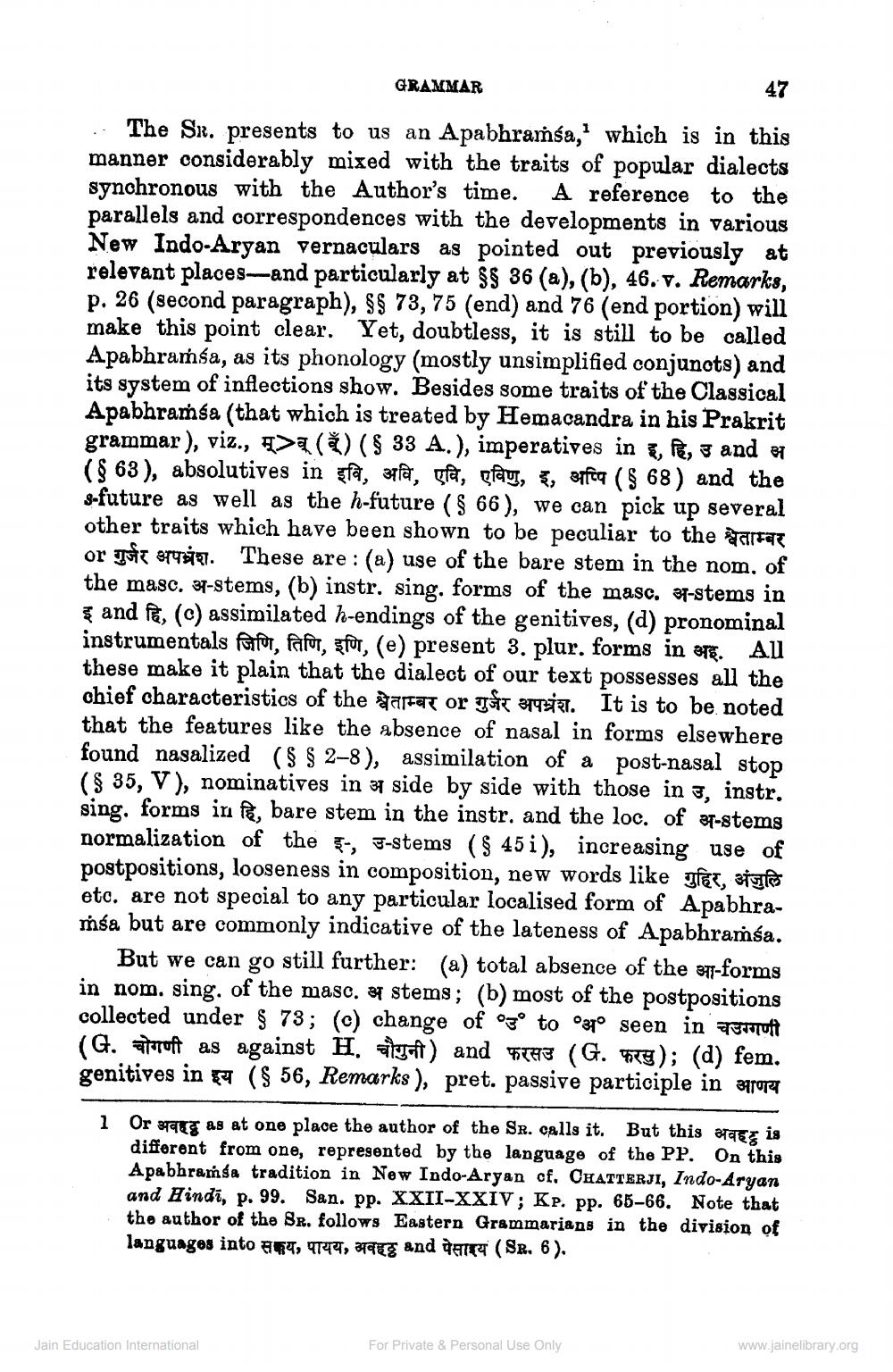________________
GRAMMAR
47
.. The Sx. presents to us an Apabhramsa," which is in this manner considerably mixed with the traits of popular dialects synchronous with the Author's time. A reference to the parallels and correspondences with the developments in various New Indo-Aryan vernaculars as pointed out previously at relevant places—and particularly at $$ 36 (a), (b), 46. v. Remarks, p. 26 (second paragraph), $$ 73,75 (end) and 76 (end portion) will make this point clear. Yet, doubtless, it is still to be called Apabhramba, as its phonology (mostly unsimplified conjunots) and its system of inflections show. Besides some traits of the Classical Apabhramsa (that which is treated by Hemacandra in his Prakrit grammar), viz., Æ> () (33 A.), imperatives in R, 3 and 34 ($ 63), absolutives in fa, la, gfa, play, &, Brfa ( 68 ) and the s-future as well as the h-future ($ 66), we can pick up several other traits which have been shown to be peculiar to the tarrat or ytt BTTÄ. These are : (a) use of the bare stem in the nom, of the masc. 37-stems, (b) instr. sing. forms of the masc. 3-stems in
and Fe, (c) assimilated h-endings of the genitives, (d) pronominal instrumentals Perfor, fator, stor, (e) present 3. plur. forms in ee. All these make it plain that the dialect of our text possesses all the chief characteristics of the श्वेताम्बर or गुर्जर अपभ्रंश. It is to be noted that the features like the absence of nasal in forms elsewhere found nasalized ($ $ 2–8), assimilation of a post-nasal stop ($ 35, V), nominatives in 37 side by side with those in 3, instr. sing. forms in P, bare stem in the instr. and the loc. of 3-stems normalization of the 5, 3-stems ($ 45i), increasing use of postpositions, looseness in composition, new words like viet, sigla etc. are not special to any particular localised form of Apabhramśa but are commonly indicative of the lateness of Apabhramśa.
But we can go still further: (a) total absence of the 371-forms in nom. sing. of the masc. 3 stems; (b) most of the postpositions collected under $ 73; (c) change of opo to opo seen in apriluft (G. चोगणी as against H. चौगुनी) and फरसउ (G. फरसु); (d) fem. genitives in 4 ($ 56, Remarks ), pret. passive participle in apropar
1 Or auf as at one place the author of the SR. calls it. But this aag is
different from one, represented by the language of the PP. On this Apabhraṁsa tradition in New Indo-Aryan cf. CHATTERJI, Indo-Aryan and Hindi, p. 99. San. pp. XXII-XXIV; KP. pp. 65–66. Note that the author of the Sr. follows Eastern Grammarians in the division of languages into 4, 9744, acg and dance (SR. 6).
For Private & Personal Use Only
www.jainelibrary.org
Jain Education International




